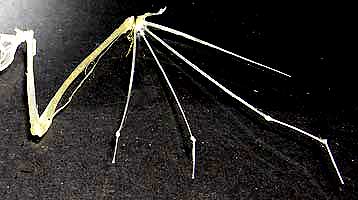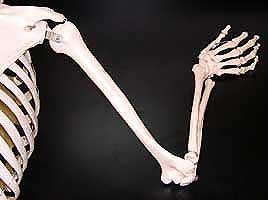1.)
a.)
My example of a homologous trait will be a Bat’s
Wing, and the Human Arm. Bats are mammals and are able to fly due to the
stretched skin across their finger bones. Humans are not able to fly using
their hands because we do not have such features.
b.)
The homologous trait would be the fact that both
the human hand and the bat’s wings have finger bones. However, bat’s finger
bones are much longer and thinner than that of a human’s fingers. The skin of
the bat’s fingers are stretched out across all of its fingers, including the
webbing in order to make a full wing, while human’s webbing is detached to
create individual fingers which are not optimal for flight. I believe that we have differed from bat’s
wings because bat’s rely on fast-paced flight as their primary source of
movement, rather than walking like humans.
c.)
Humans and bats are both of the Mammal family
d.)
2.)
a.)
My example of Analogous traits will be Insect
wings versus Bird wings. For insects I will be mainly discussing Butterflies,
and representing the birds will be Owls.
b.)
The trait that is shared between Owls and
Butterflies is that they both have wings that are meant for flight. However,
the wings of each creature are quite different in its actual composition. An
owl’s wings are comprised of bones, while a butterfly’s wings are boneless. Owl’s
wings are covered in feathers, while the butterfly’s wings are scales.
Therefore, because of the differences listed above, the possession of wings
would be considered an analogous trait.
c.)
I can’t seem to find a common ancestor of these
two creatures
d.)




Very cool choice of homologous trait, with the bat wing. I have no idea why it has never occurred to me that the bones within a bat wing would be like that of a human's with the "finger bones." Same goes with your analogous trait examples, again, It never dwaned on me the difference between a bird and buterfly's wings would be the presence of bone. Very informative. Thank you.
ReplyDeleteGood description on your homologous traits. Great analysis on the structural functional differences between the two species.
ReplyDeleteGood work on the analogous traits with one caution. Remember that your eyes can fool you, so don't depend too much on appearance to determine whether or not structures are analogous or not. We know that these two traits are analogous because of our understanding of bird evolution. Birds developed their wings after they split with reptiles, i.e., long after they split from the common ancestor with the butterflies.